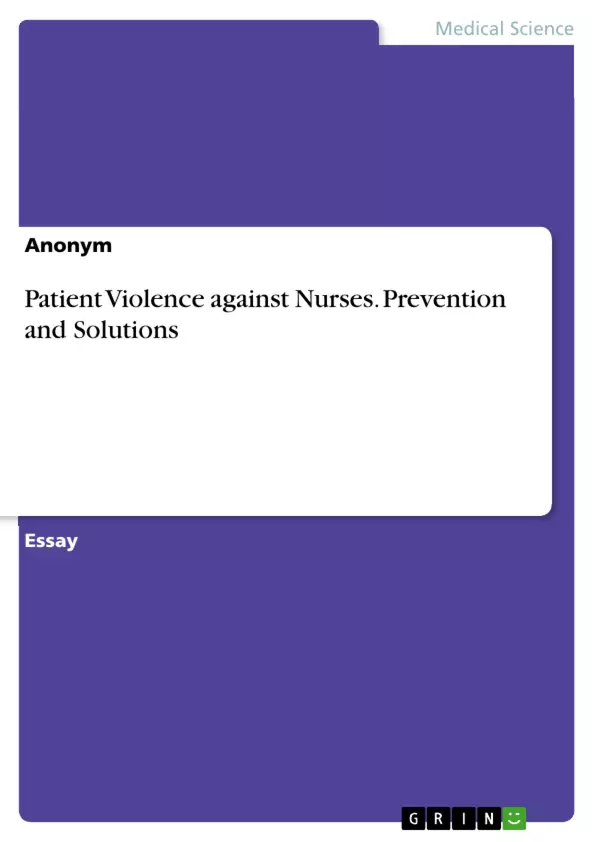Healthcare workers are prone to workplace violence from external and internal parties. Because nursing represents the most extensive portion of healthcare workers in the United States, nurses are disproportionately vulnerable to violence attributable to patients. Patient violence is an endemic occupational hazard with significant effects on nurses, patient care, and organizational performance. Nurses working in unsafe may encounter physical injuries, sexual assaults, and verbal abuse, increasing the risk of developing emotional distress and psychiatric disorders. Patient violence is also a precursor to suboptimal staff productivity, job dissatisfaction, and high employee turnover. It hinders effective nurse-patient relationships, reducing the quality of therapeutic communication. The overall effect of patient violence has consequential implications to the nursing profession, patient care, and workplace safety, highlighting the need for comprehensive measures to subdue violence incidence in healthcare settings.
Although the American Nurses Association (ANA) advocates for zero-tolerance of "incivility, bullying, and workplace violence," inadequate incidence reporting mechanisms limit the ability to nurture staff safety. Some staff members may dismiss covert and overt aggressiveness attributable to patients with problematic behaviors and, unfortunately, propagate unsafe working situations. Thus, effective incidence reporting policies are instrumental in promoting mitigating violent encounters from patients or their family members.
Table of Contents
- Preventing Patient Violence against Nurses
- Description of the Problem
- Literature Review
Objectives and Key Themes
This capstone project aims to address patient violence against nurses, identify potential barriers, and develop an evidence-based intervention plan for reducing the risk of workplace violence in nursing practice. It proposes to assess staff perceptions toward patient violence and reporting mechanisms in nursing practice. The project aims to identify risk factors influencing patient violence against nurses and policy improvement opportunities.
- Patient Violence against Nurses
- Workplace Violence (WPV) in Healthcare
- Risk Factors and Triggers for Patient Violence
- Policy and Procedural Improvements for Incident Reporting
- Evidence-Based Interventions for Reducing Patient Violence
Chapter Summaries
- Preventing Patient Violence against Nurses: This chapter introduces the problem of patient violence against nurses as a significant occupational hazard in healthcare settings. It highlights the prevalence of violence, the impact on staff safety, productivity, and patient care, and the importance of addressing this issue for the wellbeing of nurses and the quality of healthcare delivery.
- Description of the Problem: This chapter delves deeper into the nature of workplace violence against healthcare workers, particularly nurses, and its various forms. It discusses the frequency of patient-on-nurse violence, the psychological and physical effects on nurses, and the challenges associated with underreporting due to the perceived seriousness of the issue.
- Literature Review: This chapter explores existing research on patient violence against nurses. It examines the link between patient violence and suboptimal patient satisfaction, burnout, and staff turnover. It also discusses the role of communication and interpersonal awareness in preventing violence, and the importance of robust incident-reporting systems for identifying and mitigating risk factors.
Keywords
The main keywords and focus topics of this work include patient violence, workplace violence, nurses, healthcare workers, risk factors, safety, incident reporting, evidence-based practice, policy improvement, and organizational effectiveness.
- Citation du texte
- Anonym (Auteur), 2022, Patient Violence against Nurses. Prevention and Solutions, Munich, GRIN Verlag, https://www.grin.com/document/1359141



